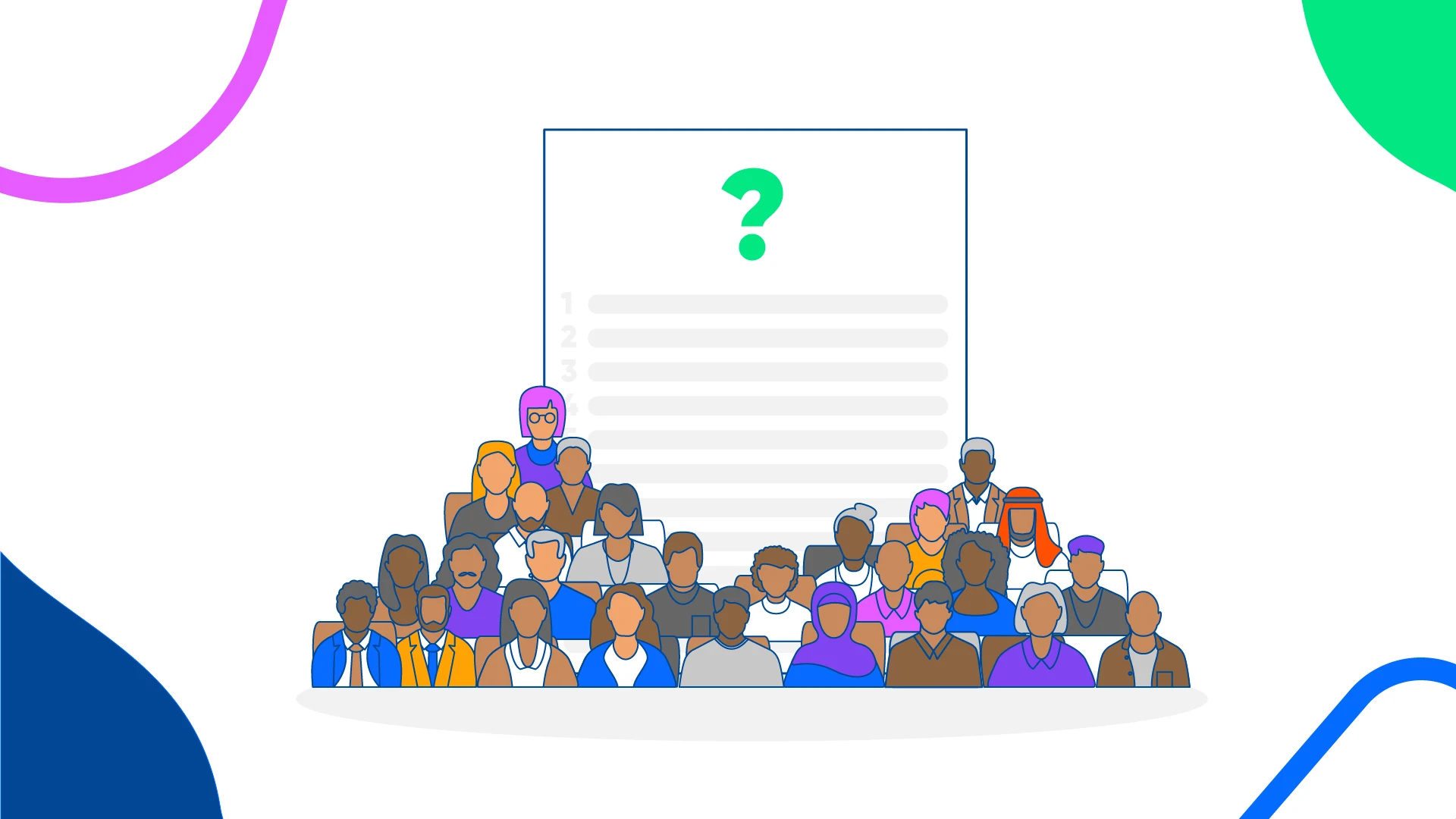💥 Our new & improved browser extension lets you manage your meetings, scheduling links, and contacts in a single click
Table of contents
You've crafted an attractive job description, you feel good about your recruitment process, and the job applications have started to fill your inbox. With a high volume of strong candidates, it can be tricky to decide who the right candidates are to add to the shortlist.
Knowing how to shortlist from a large number of candidates creates a more effective hiring process that saves you time down the line.
Here we’ll explain the purpose of shortlisting, how many candidates are usually shortlisted for one open position, and the tricks that’ll make your shortlisting process easier.
The purpose of shortlisting
Shortlisting helps reduce the time-consuming nature of the interview process. Open positions get such a high number of applications, it’s impossible to offer a job interview to everyone.
Shortlisting also creates the framework so the recruiter, hiring manager, and other members of the hiring team are on the same page about what qualifications the right candidate needs ahead of time.
Your ability (or lack thereof) to shortlist effectively may indicate that your recruitment process needs some tweaking. But if done right, shortlisting makes finding new hires much easier and faster.
6 tips to make sure the best candidates make the shortlist
Make the most of your hiring efforts and follow these tips to find the best candidate. The more you practice these six habits, the easier shortlisting will get.
1. Know your must-haves for the job opening
What are the non-negotiables of the open role? These are not the same as your wish list. While your wish list includes skills that would be nice to have, the must-haves portion means that if that work experience isn’t clearly listed on their resume or cover letter, they're not landing on the shortlist.
If you're unfamiliar with the must-haves for the job title, a quick informal coffee chat with a member of the team who is doing or has done the job before will help. They’re often the best people to consult to help you to identify the most important skill sets. You may even invite them to perform a light resume screening of any candidates that are stumping you.
2. Eliminate any candidates who don't have the essential criteria
If a candidate has the required years of experience and the right job title but is missing other core competencies, they shouldn’t make the shortlist. If the job seeker was an internal referral and boasts an impressive LinkedIn network but doesn't have the No. 1 most essential skill required, then they shouldn’t get a job offer.
You may be looking at a large stack of cvs for qualified candidates, but you have to decide who is the most qualified candidate based on what you've determined ahead of time. If you start bending the rules, you’ll invest too many hours in the hiring process.
3. Every hiring process should start with a screening interview
A screening interview involves an initial phone interview with the recruiter who is actively looking for reasons to disqualify any unsuitable candidates based on the essential criteria.
In this first interview, you may disqualify an interviewee for a miss in any of these areas:
Lack of one or more essential skills
Mismatched salary expectations
Unreliable availability
Poor communication skills
Inconsistencies or other red flags
If the candidate isn’t a match, be sure to follow up with a courtesy call or email to give them interview feedback.
4. The shortlist should be short
According to Jobvite's 2019 survey, about 14% of U.S. job candidates make it to the interview process. If you're inviting 50% of job seekers to a face to face interview, you’re going well over how many candidates are usually shortlisted for an interview.
You're not doing a good job of shortlisting candidates either because your essential criteria are too broad or you have too many qualified applicants interested in your job posting.
While the latter seems like a good problem to have, it signals that an even closer look at the hiring process is required to get to the best candidate. This requires a rigorous recruitment strategy involving data-driven testing.
5. Use a structured job interview format
Structured interview questions help the recruiter and hiring manager counteract their inherent bias. This interview process involves asking job seekers the same interview questions in the same order.
Structured interview formats create scheduling predictability, which is also helpful in managing your hiring process.
6. Score candidates after each interview round
This simple process added to each interview round will make your life much easier. There's no need for a complex scoring system. It can be a range that's as simple as "strong hire" to "strong no hire."
Or you can try the MEP method which stands for mandatory, essential, preferred. Assign points on the job description with a corresponding point system. Assign a letter to each portion of the job seeker's application as it relates. By the end, you should have a bird's eye view of each candidate's qualification level based on their score.
How many candidates are usually shortlisted for an interview?
There are two main essential criteria to consider when thinking about how many candidates to shortlist:
1. How quickly do you need to fill the seat?
Is this an urgent hire? That might mean that your shortlist should be protected with both hands. There's no worse combination than a high-priority hire coupled with an excruciatingly long hiring process.
There’s no evidence to suggest that meeting with more candidates will improve your chances of finding the best candidate. Instead, shortlist strategically to save energy and time, and get that job offer out the door.
2. What level job is the job opening?
For more senior or niche positions you may be tempted to shortlist candidates even if they don't meet all of the essential criteria. This is creating more work and follow-up in the long run. It's far better to be discerning about your shortlist from the start of the hiring process even with a talent shortage.
SHRM reports that a bad hire costs up to $240,000 when accounting for recruitment, onboarding, and then hiring the replacement. The cost of giving the wrong candidate a job offer can affect more than your bottom line — it affects product quality and team morale too.
There is no magical number that works across all job openings, use your discernment.
Things to remember when shortlisting
To develop strong shortlisting practices, let's recap:
Start by identifying the most critical aspects of the job opening.
Decide the hiring team's capacity and work backward on the number of candidates to shortlist as a starting point.
Develop structured interviews to help reduce unconscious bias and make scheduling more effective.
Score candidates to eliminate guessing.
Find the best candidate by shortlisting strategically
Shortlisting will help you effectively compare the best of the best by weeding out any unsuitable or unqualified candidates. The more you practice building a shortlist, the easier it gets, and the more effective your hiring process becomes.
An effective hiring process means better team fit and reduced turnover, which saves the company money and prevents headaches for the talent acquisition team. When it comes to recruiting, a little pre-hiring strategy goes a long way, don't skimp on it.
Webinar: Automate your recruiting process + build candidate pipeline
Related Articles
Don't leave your prospects, customers, and candidates waiting
Calendly eliminates the scheduling back and forth and helps you hit goals faster. Get started in seconds.
Calendly eliminates the scheduling back and forth and helps you hit goals faster. Get started in seconds.

